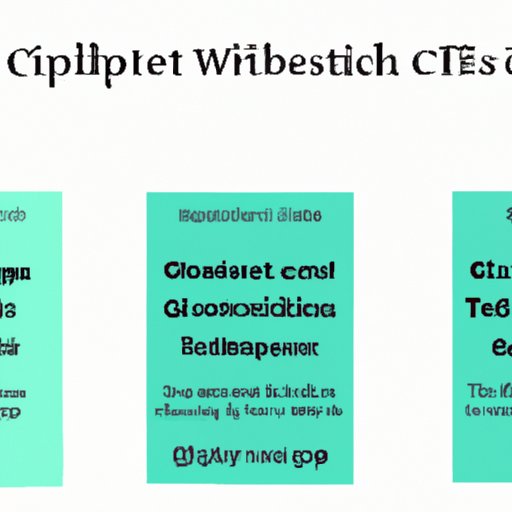I. Introduction
Whether you’re writing a research paper, a blog post, or any other type of content, it’s important to correctly cite your sources. Citing a website is no different, but the process can be confusing if you’re not familiar with the various citation styles and requirements. This article provides a step-by-step guide for citing a website and shares helpful tips and tools to make the process easier.
II. Step-by-Step Guide to Citing a Website
Before you can cite a website, you need to choose a citation style. The most common citation styles are MLA, APA, and Chicago, but there are others as well. Each style has its own requirements for information such as author, date, title, URL, and more. Once you’ve chosen a style, follow these steps to create a proper citation:
- Gather the required information: Author name, title of the article, publication date, website name, URL of the webpage, date you accessed the webpage.
- Format the citation according to your chosen style.
- Ensure that all punctuation is correct and that the citation is consistent throughout your paper or document.
III. Visual Walkthrough of the Citation Process
We’ve created an infographic to help guide you through the citation process. It provides helpful tips, examples, and step-by-step instructions for each citation style.
(picture of the infographic)
IV. Common Mistakes When Citing a Website
Even experienced writers can make mistakes when it comes to citing a website. Here are some of the most common mistakes and how to avoid them:
- Forgetting to include the date of access: It’s important to include the date you accessed the webpage in case the content changes over time.
- Incomplete URL: Make sure to copy and paste the entire URL, including the https:// portion.
- Incorrect formatting: Check the requirements of your chosen citation style to ensure all information is correctly formatted and punctuated.
- Using the wrong citation style: Double-check which citation style your instructor or publisher prefers.
- Not citing at all: Remember to cite any source you use to avoid plagiarism.
V. Showcase the Best Citation Tools Available Online
The internet offers various citation tools to make the process of citing a website easier. Here are some of the best tools available:
- Citation Machine: An easy-to-use citation generator that supports multiple citation styles.
- EasyBib: A free citation generator that offers a suite of tools for bibliography creation and organization.
- BibMe: A comprehensive citation tool that supports multiple citation styles and allows you to search databases to add sources to your bibliography.
- Zotero: A free, open-source citation tool that allows you to collect, organize, and cite your sources.
VI. Frequently Asked Questions
Q: How do I know which citation style to use?
A: Check with your instructor or publisher to determine which citation style is required.
Q: Do I need to include the full URL in the citation?
A: Yes, include the full URL so that readers can access the webpage directly.
Q: What if the webpage has no author listed?
A: Use the title of the webpage in place of the author.
Q: How do I cite a quote from a webpage?
A: Include the author’s name and the page number the quote appears on, if available, in addition to the other required information for your chosen citation style.
Q: Do I need to include the date of publication?
A: Yes, include the date the webpage was published or last updated.
Q: Can I use a citation generator instead of creating my own citation?
A: Yes, but make sure to double-check the generated citation for accuracy.
VII. Conclusion
Citing a website is an important aspect of research and writing. By following the steps and avoiding common mistakes outlined in this article, you can create accurate citations for your sources. Additionally, the online citation tools listed here can make the process easier and faster. Start citing your sources properly and give credit where it’s due.
Don’t forget to share this article with your friends or leave feedback if you found it helpful.
